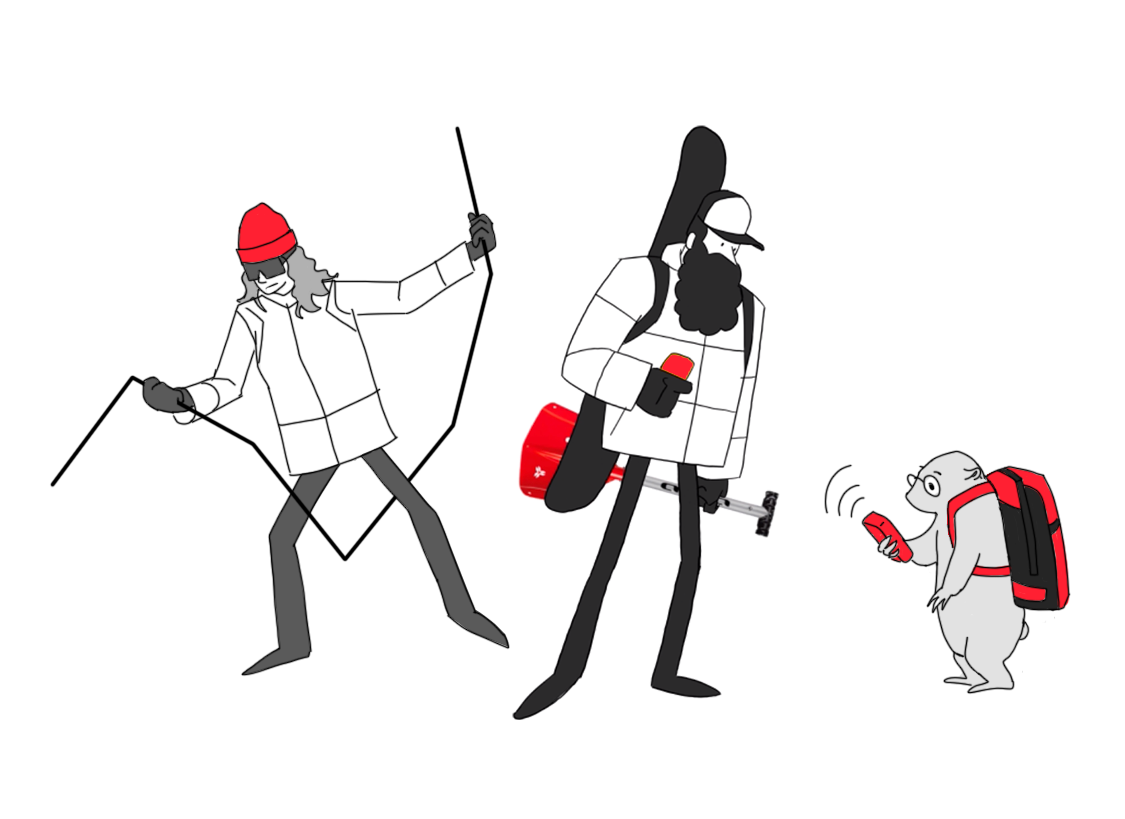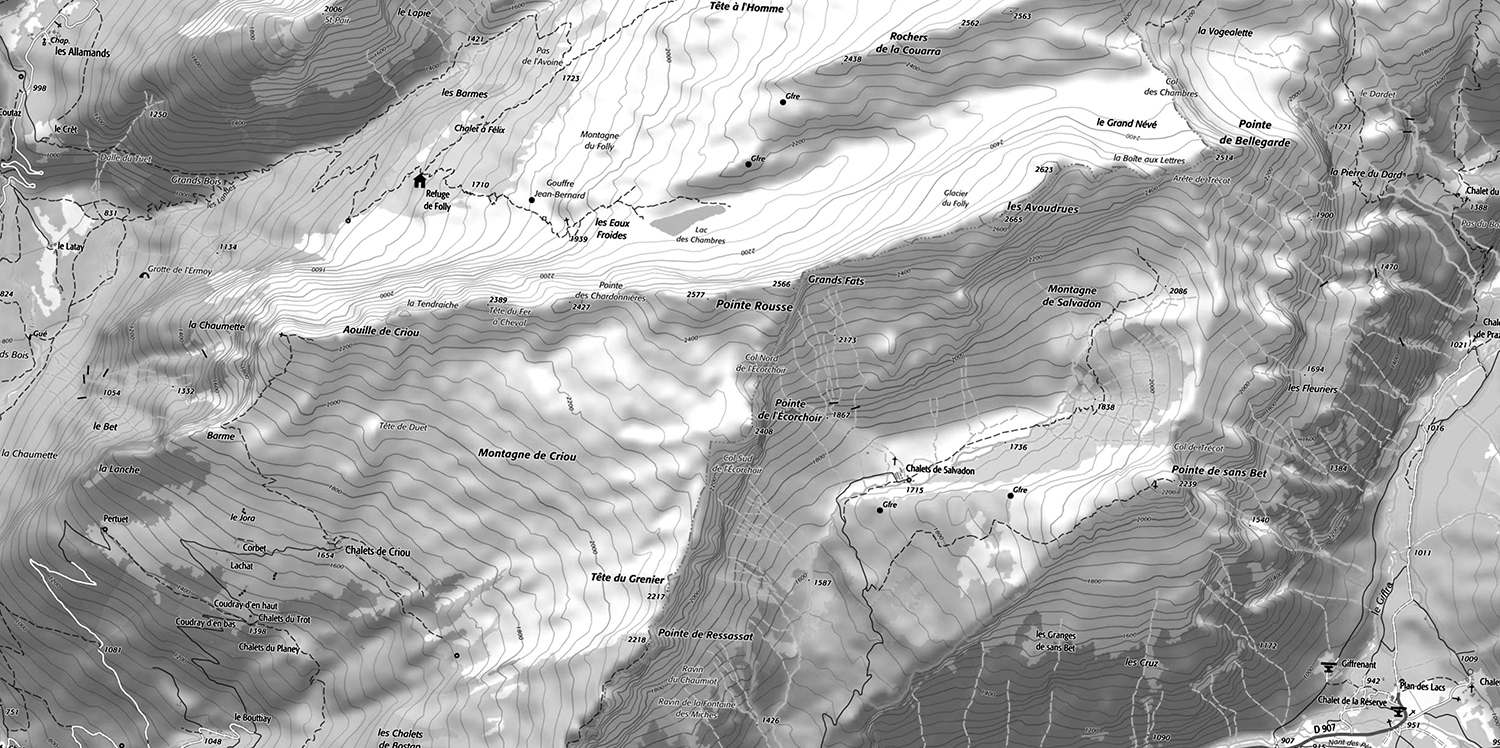IN THE FIELD: BEFORE LEAVING HOME
PROPER PREPARATION AND PLANNING = REDUCING EXPOSURE TO RISK

By properly preparing for and planning your outing ahead of time, you reduce the risk of being caught in an avalanche. The method we describe involves gathering information about the group, the snowpack, the weather, and the terrain when planning a tour and choosing an objective. Planning includes speaking with each member of the group to determine the best options together.
Plan a reasonable objective for the people in your group (especially geared towards the most inexperienced person and/or the weakest link) as well as one that meets everyone’s expectations.
Key questions to ask :
• Who and how many people are in the group ?
• What is everyone’s level of experience and knowledge ?
• What is their physical condition ?
Is everyone equipped and trained (Transceiver, shovel, probe, communications device, airbag, RECCO, or other…) ?


Gather as much information as possible about the avalanche risk for the peak or range where you plan to tour, and identify the areas that are most exposed to avalanche danger. The avalanche advisory in France (aka “BERA”), published by the country’s national weather service (aka “Météo France”) provides key information for estimating the avalanche risk for a given range or sub-range. Click here for the advisory. Ski resorts in France (and most of the European Alps) also post the advisory for the day on information signs throughout the ski area.
Review the weather forecast to pack the right gear and prepare for a potential increase in avalanche risk over the course of the day.
Key questions to ask: Is the avalanche risk going to increase or decrease? Will it snow/rain? If so, how much snow/rain? Will there be any wind? If so, to what extent will the wind transport snow? Will temperatures rise? Will it be cloudy/foggy?


Choose an objective and a way to get there that factor in the weather conditions and the group (experience, physical condition, ability, etc.). Several online tools allow you to trace your route and visualize slope angle for the surrounding terrain (ex., Geoportail in France). These tools should not replace a paper map but can provide valuable additional information. Several smartphone applications are also available and useful once out in the mountains. Make sure that you understand and keep an eye on battery life for any electronic devices you use.
Depending on the danger rating in the avalanche forecast (Euro Scale?), certain slopes should be avoided.
Danger level 1 : avoid slopes over 40°
Danger level 2 : avoid slopes over 35°
Danger level 3 : avoid slopes over 30°
Danger level 4 : outing not recommended.
In general, remain on low angle slopes under 30°, knolls, and ridgelines.
